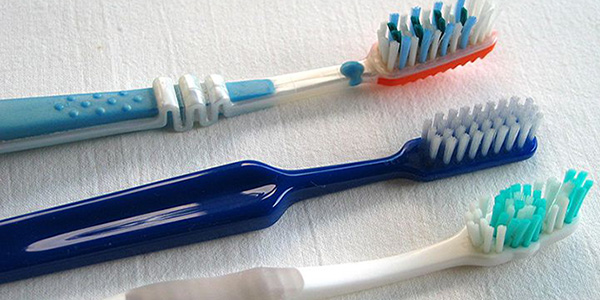Oral Hygiene
Patients who have implants must commit themselves to a lifetime of stringent oral hygiene practices. This is to ensure that the gingival tissues surrounding the implant remain healthy, with no plaque accumulating around any natural teeth, the prosthesis or implant.

This involves the effective control and removal of food debris, negative (bad) bacteria, and their by-products in the mouth. If not removed, the by-products of the bacteria cause an inflammation of the gum and can proceed to destroy the bone around the implant. This is called gingivitis and perio-implantitis, and is usually indicated by bleeding gums.
A mouth free of plaque is not only beneficial to your oral environment, but also to your body. Studies have proven that bad dental bacteria can have a negative effect on your health.
Protocol
Brush at least twice a day; after breakfast and before going to bed at night, using an electric or manual toothbrush. Apply the appropriate interdental tools daily using floss, an interdental brush and/or a single tufted brush. An oral irrigator is also highly recommendable.
Tools available to maintain good home care:
- Electric toothbrush
- Manual toothbrush
- Stage 1 baby brush
- Implant floss
- Flossthreader
- Interdental brush
- Single Tufted Brush
- Oral irrigator
- Gauze strips
Manual Toothbrush
Using a manual toothbrush, position the brush head on the last tooth on the side of the cheek at a 45° angle. Apply a vibratory circular motion for ten counts. Move onto the next tooth and repeat the same procedure, moving along the arch until all teeth have been brushed. Brush all surfaces of your teeth/prosthesis in this way. Do not forget the surface of the tongue.
Electric Toothbrush
An electric toothbrush can be used once the implants are fully integrated. Position the head of the toothbrush on the last tooth in your arch. Angulate it towards the back, middle and front of the tooth 3-4 times per tooth repeatedly, following the curvature of the tooth. Move on to the next tooth and repeat the same procedure. Brush all surfaces of your teeth/prosthesis in this way, and don’t forget the surface of the tongue.
Flossing
Familiarize yourself with the position of your implants in relation to your prosthesis. It is crucial that the base of the prosthesis and the gum is kept free of plaque. The Superfloss or G.U.M Implant floss has a rigid end that is used to thread the floss between the base of the prosthesis and the gum.
Manoeuvre the floss in a see-saw motion, utilizing the fluffy part to clean off any plaque. Ensure to clean between every implant. There is often an extension at the end of a full arch prosthesis; hook the floss over the end and pull it forward till it stops at the next implant. If you battle to insert the tip of the floss, use a floss threader.
A gauze strip is used in the same manner in wider spaces.
Inter-dental brush
- Tapered: To be used in restricted areas
- Cylindrical: To be used where there is more space between the gum and the prosthesis.
Insert the little brush between the base of the prosthesis and the gum. Move it gently to and fro and from side to side (implant to implant). Enter from the lip side and then repeat the same procedure from the palatal and/or tongue side.
Oral Irrigator
With this device water is squirted under high pressure out of a nozzle. By guiding the tip between the base of the prosthesis and the gum, debris and some of the plaque is flushed away. The water jet stimulates the blood flow to the gum, making it more resistant to inflammation.
Mouthwash
If your surgeon prescribes an oral rinse for you, use as directed. Many commercially available mouthwashes contain alcohol, which tend to dry out the oral mucosa. For this reason, they should only be used for short periods of time. The proven and most effective way of removing plaque is by applying the correct brushing and flossing techniques.

